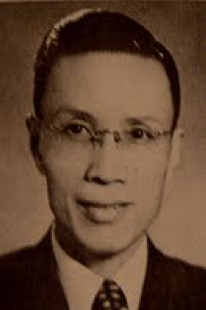Lok Hup Ba Fa
(Six Combinations, Eight Methods)
Our lok hup ba fa (liu he ba fa) form comes to us from Wu, Yi-Hui to Leung, Tze-Pang to Moy, Lin-Shin. It is one of the last “closed door” internal arts systems. It is said that lok hup has the elements of tai chi, bagua and xing-yi along with its own special characteristics. While some believe that it was in fact created by Wu, Yi-Hui from his understanding of the traditional three internal martial arts, tradition claims its lineage extends back to the fifth patriarch of Hua Shan.
Since traditionally, the student would only be taught lok hup after having learned tai chi, bagua and xing-yi, it was said that the “flavour” of your lok hup would reflect the internal art specialization of your teacher.
From Master Moy’s arrival in Canada in 1970 until October 1983, he only taught lok hup to students who had already achieved a fairly high level of skill and then only the first half of the form.
Beginning in October 1983, he began teaching the first half of the form to anyone who could walk through the tai chi form. As he said: “Previously, I taught students at the level of lok hup. Now I teach lok hup at the level of the student.” To achieve this he lessened the lateral and “re-coiling” quality of some of the movements.
Some people incorrectly believe that he made our lok hup more like our tai chi. Our tai chi already had a strong influence from lok hup. Ironically, even though Master Moy obviously held tai chi and xing-yi in higher regard than bagua, a strong bagua influence can be seen in our lok hup.
Master Moy started teaching the second half of the lok hup form widely in 1987 and started promoting formal, regular lok hup classes in which the entire form was taught. We continue in this tradition. Again, as always, if your lok hup practice doesn’t lead to enhanced understanding and ability in your tai chi bare hand form, Master Moy would not consider that the lok hup had done its job.
Leung Tze Pang

Leung Tze Pang brought the internal art of lok hup ba fa, the six combinations, eight methods spirit and mind boxing to so many students.
Moy Lin-Shin studied with Mr. Leung for several years, until Mr. Leung;’s death in 1974. The power and knowledge built into this set of movements offers keys to understanding internal movement and the resultant health benefits that accrue from its study.
Courtesy of The Canadian Tai Chi Academy. All rights reserved
